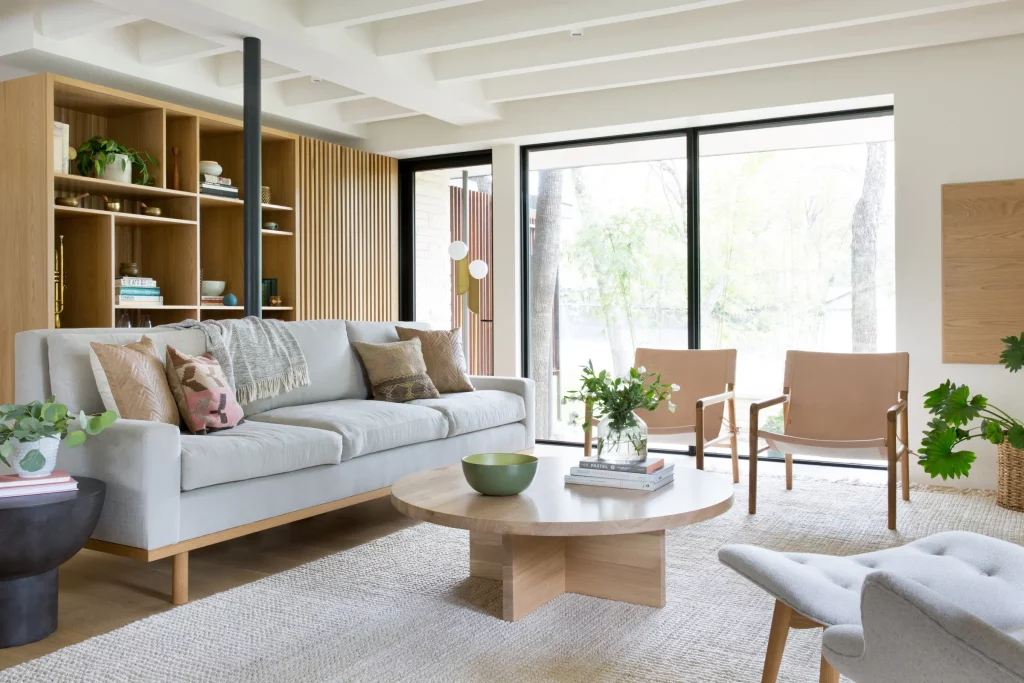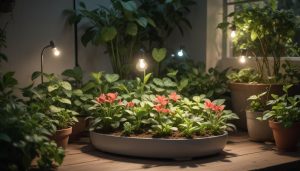Creating a Minimalist Home Without Feeling Restricted
Jessica White August 21, 2025
Minimalism is more than just a design trend—it’s a lifestyle choice. Yet, many people worry that simplifying their home means losing comfort or personal style. Fortunately, creating a minimalist home without feeling restricted is entirely possible. With thoughtful design, multifunctional furniture, and strategic organization, you can enjoy a clean, open space while maintaining warmth and personality. This guide explores emerging trends, practical strategies, and expert tips to help you achieve minimalism without compromise.

1. Function Over Form: Make Every Space Count
One of the core principles of minimalism is using your space effectively. Creating a minimalist home without feeling restricted begins with prioritizing function while keeping aesthetics in mind.
- Multifunctional furniture: Items like sofa beds, extendable tables, and foldable desks allow a single room to serve multiple purposes.
- Open layouts: Removing unnecessary partitions allows light to flow and makes rooms feel larger.
- Intentional decor: Select a few meaningful decorative items instead of filling surfaces with clutter.
Recent surveys show that homes with multifunctional furniture can feel up to 20% larger without increasing square footage (Houzz 2024). The goal is to make every piece purposeful without overcomplicating the space.
2. Innovative Storage Solutions for a Clutter-Free Life
Storage is crucial when adopting minimalism. Clever storage allows you to keep essentials accessible without overcrowding your home.
- Hidden storage: Under-bed drawers, built-in shelving, and storage benches keep items out of sight.
- Vertical space: Wall-mounted shelves and hooks free up floor space while providing practical storage.
- Seasonal rotation: Store off-season clothing or decor elsewhere to keep daily items visible and usable.
Studies indicate that well-organized spaces significantly reduce stress and improve focus (American Psychological Association, 2022). Proper storage helps maintain a serene environment, so minimalism doesn’t feel restrictive.
3. Neutral Colors and Natural Materials: A Calming Palette
Color and material choices define the feel of a minimalist home. Soft, neutral tones paired with natural textures can create an expansive, welcoming environment.
- Color scheme: Whites, grays, and muted earth tones make rooms feel light and open.
- Natural textures: Wood, stone, and linen add warmth without adding visual clutter.
- Accent pieces: Introduce color and texture selectively, such as with a single artwork or a textured throw.
Minimalist design now trends toward eco-friendly materials, blending sustainability with a simple aesthetic (ArchDaily 2023). Using natural textures creates a cozy yet uncluttered feel.
4. Decluttering as a Lifestyle
Minimalism works best as a continuous habit, not a one-time purge. Regular decluttering ensures your home stays functional and airy.
- The 30-Day Rule: If you haven’t used an item in 30 days, donate or store it.
- Categorize possessions: Group items by frequency of use to streamline storage.
- Digital decluttering: Keep digital spaces organized to match your physical minimalism.
Ongoing decluttering helps prevent your minimalist home from feeling sterile or restricted, allowing you to live comfortably while maintaining simplicity.
5. Maximize Natural Light and Add Greenery
Light and plants can make even a small minimalist space feel expansive and inviting. They provide life and energy without creating physical clutter.
- Natural light: Use sheer curtains or blinds to allow light in without sacrificing privacy.
- Mirrors: Strategically placed mirrors amplify natural light and create the illusion of more space.
- Indoor plants: Low-maintenance options like snake plants and succulents introduce greenery without overcrowding.
According to Harvard Health (2023), natural light and indoor plants improve mood and reduce stress, making your minimalist home feel more welcoming and alive.
6. Smart Minimalism: Technology Meets Simplicity
Technology can enhance minimalism if used thoughtfully. Smart home solutions streamline everyday life without visual clutter.
- Smart lighting: Control brightness and ambiance with apps or voice commands.
- Wireless solutions: Reduce cords and clutter with wireless speakers, chargers, and devices.
- Voice assistants: Minimize multiple gadgets while keeping your home connected and efficient.
Smart minimalism is growing in popularity, helping homeowners enjoy convenience without compromising a clean, minimalist aesthetic (Forbes 2024).
7. Flexible Spaces for Work, Rest, and Play
A minimalist home should be versatile. Flexible rooms allow you to adapt your living space as needs change.
- Convertible spaces: Use foldable desks or tables to create dual-purpose rooms.
- Sliding partitions: Offer privacy when needed without permanently dividing the space.
- Open-concept living: Combine dining, living, and work areas efficiently.
Flexible, adaptable spaces support a minimalist lifestyle without making your home feel restrictive. This approach aligns with trends in modern interior design, where homes are meant to serve multiple functions comfortably.
8. Personal Touches Without Clutter
Even minimalism benefits from personal expression. Thoughtful touches ensure your home feels lived-in, not empty.
- Quality over quantity: Select a few meaningful objects, photographs, or art pieces.
- Functional decor: Items like decorative bowls or baskets can be both beautiful and practical.
- Textiles: Rugs, cushions, and throws add texture and warmth without visual chaos.
Personalized, purposeful decor ensures creating a minimalist home without feeling restricted retains character and comfort.
Conclusion: Embrace Minimalism Your Way
Creating a minimalist home without feeling restricted is achievable by prioritizing function, organizing smartly, and incorporating natural elements. By combining thoughtful furniture choices, clever storage, neutral palettes, and flexible spaces, your home can feel open, calming, and personalized. Minimalism doesn’t mean sacrificing comfort—it’s about creating a space that enhances your life while reducing excess. With these strategies, minimalism becomes a practical, sustainable, and enjoyable lifestyle.
Moreover, a minimalist home encourages intentional living. Each item has a purpose, which can improve mental clarity and reduce daily stress. When your environment is simplified, you gain more space for meaningful activities, whether that’s hosting friends, focusing on hobbies, or simply enjoying peace and quiet. Minimalism also allows for adaptability: as your lifestyle changes, your home can easily be rearranged or updated without clutter. By adopting these principles, you’re not only designing a home but also cultivating a mindset of intentional, balanced living that promotes long-term well-being and comfort.
References
- Houzz. (2024) ‘Maximizing Space with Multifunctional Furniture.’ Available at: https://www.houzz.com (Accessed: 21 August 2025).
- ArchDaily. (2023) ‘Minimalist Interiors Using Sustainable Materials.’ Available at: https://www.archdaily.com (Accessed: 21 August 2025).
- Harvard Health Publishing. (2023) ‘How Natural Light and Indoor Plants Affect Wellbeing.’ Available at: https://www.health.harvard.edu (Accessed: 21 August 2025).







